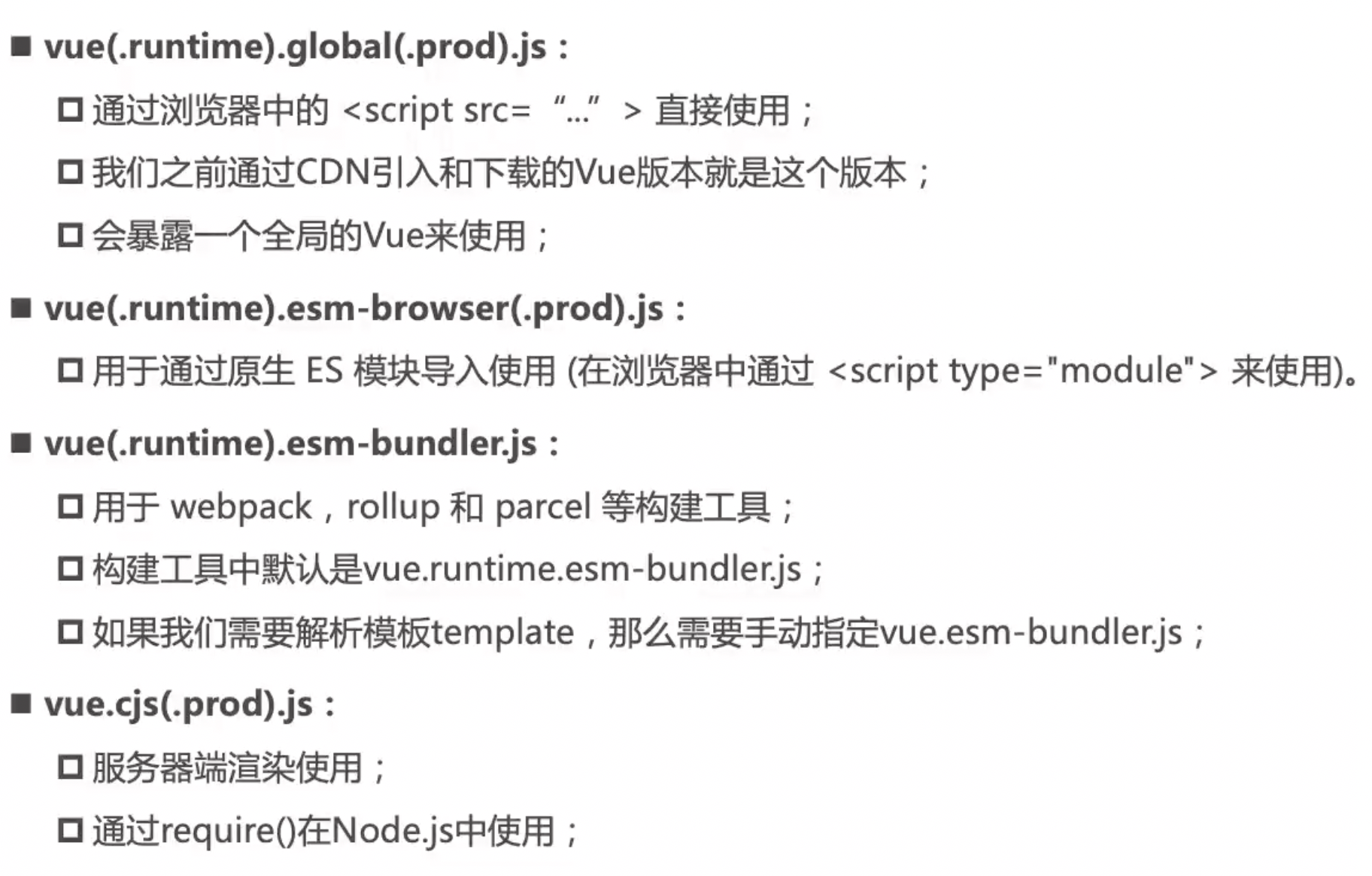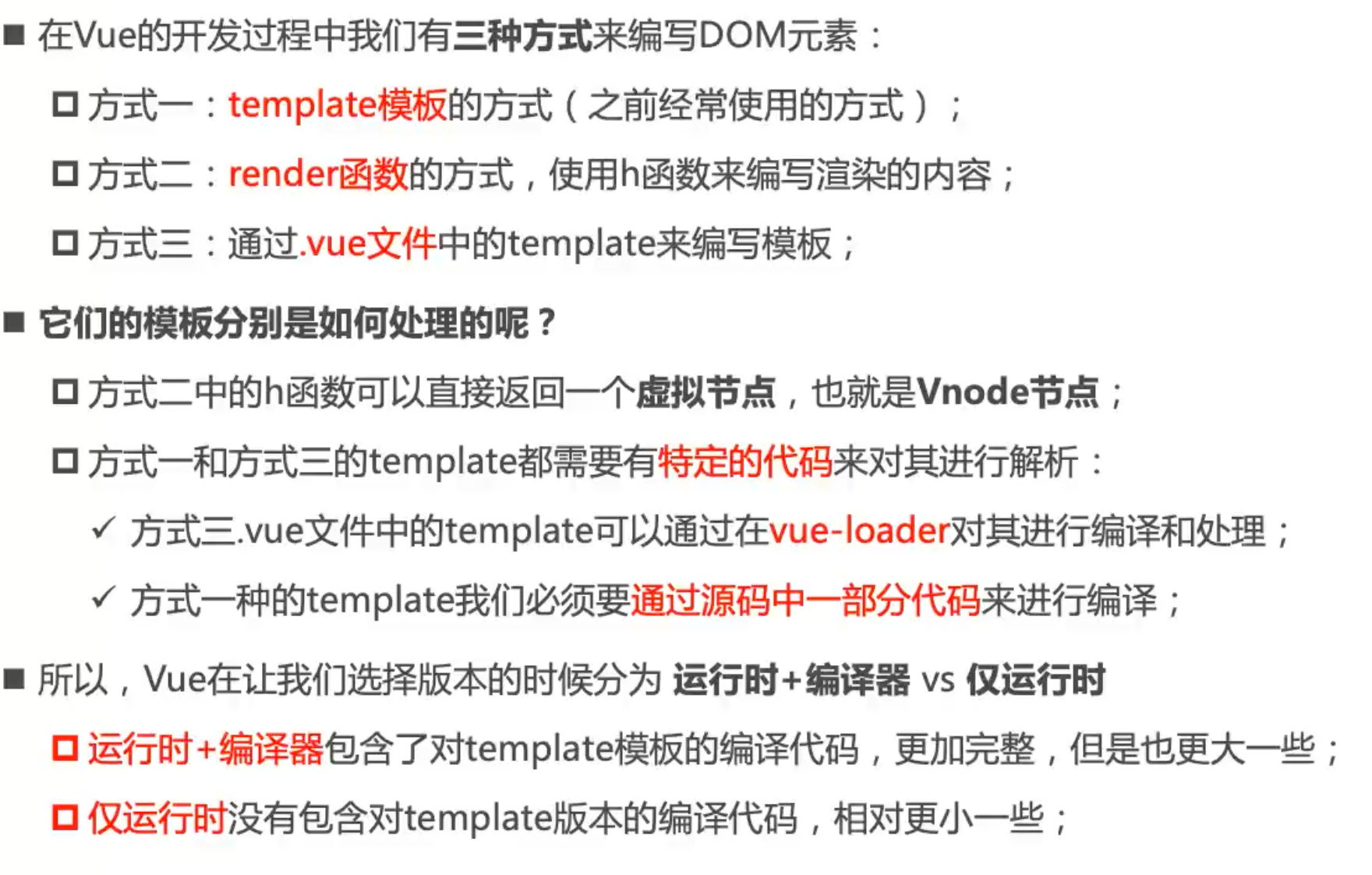Vue中runtime-compiler与runtimeonly的区别
#tag
Vue打包后不同版本的笔记
Vue打包后不同版本解析

运行时+编译时 VS 仅运行时

疑惑
在使用Webpack打包vue时,默认使用vue引入
1 | |
webpack打包后,是看不到vue渲染出来的东西的。
因为引入的vue版本是runtimeonly版本。需要改成runtime-compiler版本才可以渲染。
修改:
1 | |
runtime-compiler与runtimeonly的区别
- 如果在之后的开发中,你依然使用template,就需要选择runtimecompiler
- 如果你之后的开发中,使用的是.vue文件开发,那么可以选择runtimeonly
runtimecompiler
Vue中的模板如何最终渲染成真实DOM
template -> ast -> render-> vdom -> UI
runtimeonly
Vue中的模板如何最终渲染成真实DOM
render -> vdom -> UI
性能更高
代码量更少
那么.vue文件中的template是由谁处理的
是由vue-template-compiler
runtime-only 更快的原因:
runtime-only比runtime-compiler更快,因为它省略了vue内部过程中的第一个过程,如果是runtime-compiler那么main.js中就会出现template从而需要过程一导致增加了一个过程,同时增加了大小而 runtime-only 模式中不是没有写 template ,只是把 template 放在了.vue 的文件中了并有一个叫 vue-template-compiler的在开发依赖时将.vue文件中的 template 解析成 render 函数了因为是开发依赖,不在最后生产中,所以最后生产出来的运行的代码没有template。
下一步:不使用<template>这种方式,使用SFC的方式开发Vue
[[Webpack5配置Vue3-SFC]]
使用SFC的方式后就可以使用runtimeonly版本了!
1 | |
参考链接
本博客所有文章除特别声明外,均采用 CC BY-SA 4.0 协议 ,转载请注明出处!